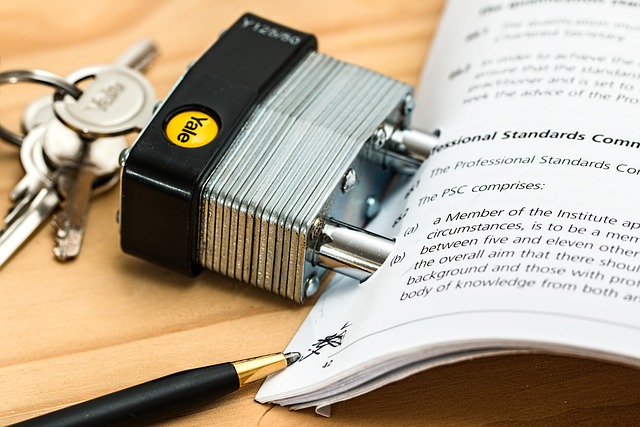The Oregon Child Welfare Court is a critical entity for protecting vulnerable children, with specific jurisdiction over abuse, neglect, and dependency cases. The text provides an in-depth look at the structured court processes designed to ensure fairness, involving key players like judges, social workers, and attorneys. It emphasizes the importance of understanding these procedures for anyone engaging with Oregon's child welfare system, offering a comprehensive guide to navigating complex court steps from petitions to outcomes. This overview highlights the critical role of the court in safeguarding children's safety and well-being through fair, evidence-based processes.
“Unraveling the complexities of the Oregon Child Welfare Court system is crucial for anyone involved in child protection. This comprehensive guide offers a detailed look at the intricate procedures and players within this vital jurisdiction. From understanding the court’s reach to navigating post-hearing outcomes, we demystify each step. Whether you’re a parent, advocate, or professional, gaining insights into Oregon’s child welfare court process is essential for ensuring fair outcomes. Discover how to file petitions, participate in hearings, and exercise your rights with this invaluable resource.”
- Understanding Oregon Child Welfare Court Jurisdiction
- Key Players in the Oregon Child Welfare Court Process
- Filing a Petition: What You Need to Know
- Court Hearings and Proceedings: A Step-by-Step Guide
- Post-Hearing Outcomes and Appeals: Your Rights Explained
Understanding Oregon Child Welfare Court Jurisdiction

Oregon’s child welfare court system plays a critical role in ensuring the safety and well-being of vulnerable children within the state. Understanding the jurisdiction of these courts is an essential first step for anyone involved in or seeking to navigate this process. The Oregon Child Welfare Court has the authority to oversee cases involving allegations of child abuse, neglect, or dependency. This includes situations where a child is at risk of harm or cannot be properly cared for by their parents or guardians.
The court procedures in Oregon are designed to provide a structured and fair process for all parties involved. It involves a series of hearings, where social workers, attorneys, and family members present evidence and arguments. This guide aims to offer insights into the steps typically followed, from initial petitions to potential outcomes, empowering individuals to better understand their rights and the overall court process in child welfare cases.
Key Players in the Oregon Child Welfare Court Process

In the intricate dance of Oregon child welfare court procedures, several key players orchestrate the process to ensure the best interests of involved children are at the forefront. The journey begins when a petition is filed, whether it’s by a concerned citizen, a government agency, or a family member, setting in motion a series of events that can ultimately lead to temporary or permanent guardianship changes. This pivotal point introduces the child and their family to the court system, where they will encounter crucial individuals dedicated to navigating these complex proceedings.
Among these key players are judges who preside over hearings, social workers tasked with investigating and reporting on the family situation, attorneys representing the child and various interested parties, and foster caregivers who temporarily provide a home for children while outcomes are determined. Each participant brings a unique role and expertise to the court process, contributing to the overall goal of ensuring safety, stability, and well-being for Oregon’s vulnerable youth. Understanding these court procedural insights is essential for all involved, offering a comprehensive child welfare court guide for navigating these critical processes.
Filing a Petition: What You Need to Know

When it comes to Oregon child welfare court proceedings, the first step is crucial: filing a petition. This formal document initiates the legal process aimed at ensuring the safety and well-being of children within the state’s jurisdiction. It’s not just about launching a case; it’s a detailed narrative that outlines the concerns, facts, and specific issues related to a child’s living conditions or potential harm.
The petition must be prepared with care, backed by substantial evidence, and filed with the appropriate court. This document is your guide through the complex court procedures Oregon has in place. Understanding its contents and purpose is essential for navigating the subsequent stages of the case, from initial hearings to potential trials and ultimately, decisions that will shape the future of the involved child.
Court Hearings and Proceedings: A Step-by-Step Guide

Oregon child welfare courts handle cases involving the well-being and safety of children within the state. Understanding the court procedures is essential for all involved, from parents and guardians to social workers and attorneys. Here’s a step-by-step guide to navigating these processes.
The initial hearing typically involves introducing the case, with a judge reviewing the reasons for the child welfare intervention. At this stage, the focus is on ensuring the child’s immediate safety. Subsequent hearings involve gathering evidence and testimonies from various parties, including social workers, medical professionals, and family members. This process aims to determine the best course of action for the child’s future, whether it involves returning them to their parents with services or placement in a foster home or relative’s care. Each hearing provides an opportunity for all involved to present their cases, ask questions, and receive clarifications on legal procedures, ensuring a fair understanding of the court’s decisions and next steps.
Post-Hearing Outcomes and Appeals: Your Rights Explained

After a hearing in an Oregon child welfare court, several outcomes can result, all designed to ensure the best interests of the child involved. If the court rules in favor of the petition, a case plan will be established, outlining the steps necessary for reunification or alternative arrangements. This might include placement with relatives, foster care, or adoption. The court may also order services like counseling or parenting classes for involved parents.
In the event of an unfavorable ruling, parties have the right to appeal. Understanding appeals processes is a crucial part of navigating Oregon child welfare court procedures. Both parents and guardians have the opportunity to present new evidence or argue against the initial decision. This step is vital in ensuring fairness and allowing all sides to be heard fully within the legal framework.
